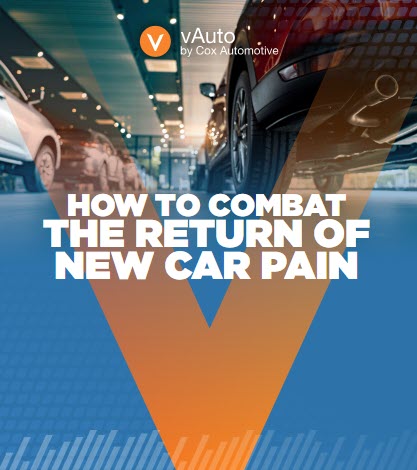Two Perspectives On Sourcing Auction Vehicles
Let’s imagine there are two dealers in the auction lane, bidding for the same car.
The first dealer wants the car because he’s sold a few of the same units recently, and did pretty well in terms of front-end gross. The three-year-old car has about 40,000 miles, and looks/smells pretty good. The CARFAX notes the car is “clean,” with “one owner.” The dealer’s checked NADA and MRR values, and thinks he can bid up to $17,300 for the vehicle, essentially the mid-point between the wholesale benchmarks, and make an estimated $2,000 front-end gross profit.
The second dealer has similar past experience with the vehicle, and also thinks it’s a decent car. Like the first dealer, he knows the vehicle’s retailing for roughly $19,500 in his market. But he also knows something else about the car the other dealer doesn’t. The vehicle has a respectable Market Days Supply of 55—a semi-fast seller if he prices it right.
The bidding starts at $16,500. It quickly climbs to $17,500.  The first dealer bails out when the auctioneer asks for $17,700. The second dealer raises his hand and owns the car.
The first dealer bails out when the auctioneer asks for $17,700. The second dealer raises his hand and owns the car.
While this scenario is fictional, it represents three important facets of sourcing auction vehicles in today’s market:
- Cars are won/lost by fairly narrow margins. You could credit the first dealer with a decent degree of bidding discipline. He stayed in the hunt, and even went past his original bid maximum, to try and get the car. But the extra $400 was too rich for his blood. He probably looked at the other dealer and thought, “That guy’s crazy. He over-paid and he’s not going to make any gross when he tries to retail it.”
- Market insights make a key difference. To be sure, the second dealer would have loved to acquire the car for less than $17,700. But for him, it made all the sense in the world, even with a likely retail selling point of $19,500. Why? First, the dealer knows all the math. His auction-buying tool calculates roughly $800 in fees, reconditioning and other costs—leaving roughly $1,000 in potential gross. While not ideal, the dealer also knows that the vehicle’s Market Days Supply of 55 means he can likely make the $1,000 in the next 10-15 days and, in two to three weeks, he’ll redeploy the same capital on another unit.
- The rise of a “total gross” perspective. The second dealer’s decision reflects an understanding that in today’s margin-compressed environment, it’s just as, if not more, important to acquire and retail vehicles that help you achieve a faster through-put of retail sales than focus solely on front-end gross profit. By doing so, dealers effectively ring the cash register more frequently—in used vehicles, parts, service and F&I. Indeed, the success of the second dealer’s decision to purchase the vehicle for $17,700 will fully depend on his ability to properly merchandise and price the vehicle for a fast retail exit. But chances are good he’ll get the job done, and make twice as much money in the time it takes the first dealer to find, acquire and retail a vehicle that passes his test for a front-end gross objectives.
In the months ahead, dealers will likely see even more competition in the lanes and online. The reason: As new vehicle sales decline, and draw even fewer trade-ins, dealers will turn their attention to auctions for the inventory they need to achieve their goals for increased sales and profitability in used vehicles and beyond.
This outlook begs a question for every dealer: What new insights, perspective and tools will you use to ensure you know the exact auction vehicles to pursue and make your money every time you acquire one?
The post Two Perspectives On Sourcing Auction Vehicles appeared first on Dale Pollak.








